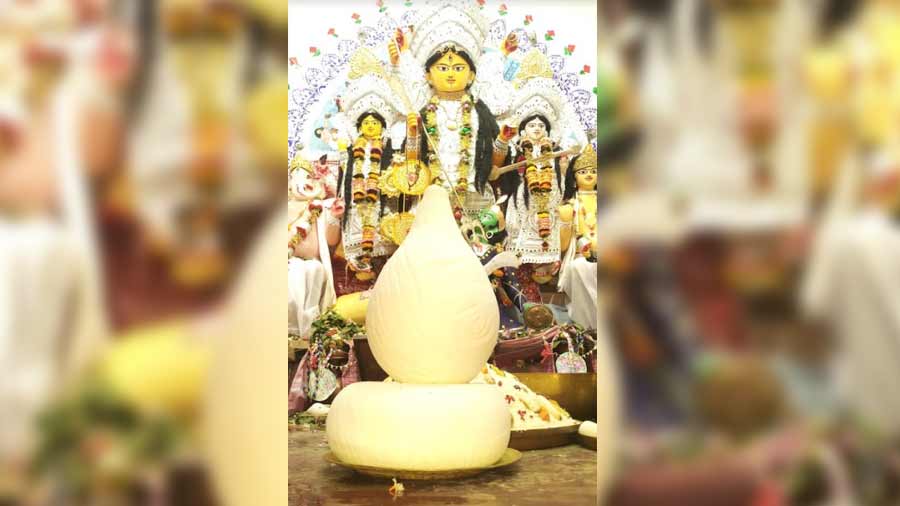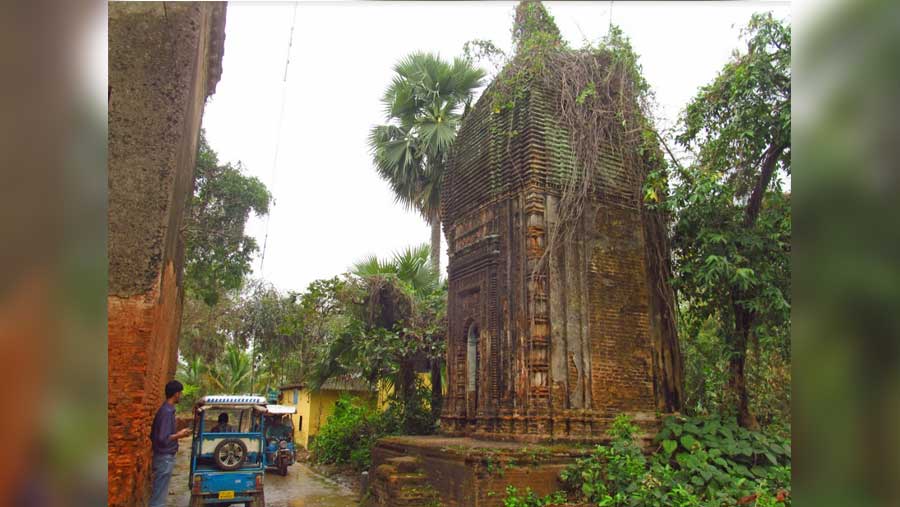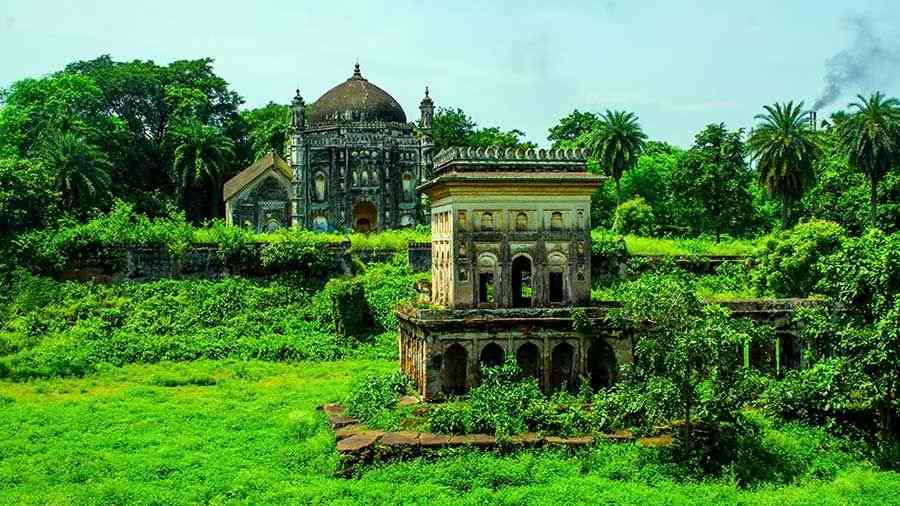With the state of affairs slowly inching towards normal, the lure of a day trip to get a glimpse of Bengal’s heritage is a tempting offer. Take a day off to drive to the historical village of Mankar in Purba Bardhaman (East Burdwan) district to discover the story of the once-burgeoning town that still has vestiges of art, architecture and family legacies peppered through it.
The beginnings
What is a small rural hamlet today, was home to close to 1,500 families in the beginning of the 19th century. Almost half of them were families of weavers who would create the once famous tussar silk of Mankar. The artisans used to also weave kutuni, similar to a double jersey fabric with silk on one side and cotton on the other. They were also known to weave fishing lines.
One of Mankar’s most celebrated families was that of Bhaktalal Goswami, who was Burdwan Maharaja Kirti Chand Rai’s (1702-1740) guru. Owing to his position, the family were given tax-free land in the region and became the area’s main landlords. Their presence also brought many learned men and educated Brahmins to Mankar.

Mankar’s huge ‘kodma’ sweets are taken to other cities and towns as offerings during Kali Puja and Durga Puja Souvik Mondal
Today, Mankar is well known for making giant-sized kodma (or kadma). The quintessential and usually-small Bengali sweets are served during almost every puja and made entirely of sugar. The huge kodma made here is taken to many other cities and towns as offerings during Kali and Durga Puja.
Family legacies

Aatchala Anandamoyee Kalibari Amitabha Gupta
One of Mankar’s most famous spots is the Aatchala Anandamoyee Kalibari. The temple’s goddess is the family deity of the erstwhile Kabiraj family. Their name is probably linked to the fact that the family’s ancestors were known to be Ayurvedic healers to the region’s royalty.
Near the well-maintained temple lies the colossal but age-worn mansion of the Kabiraj family. The house also has a thakur dalan or Durga dalan, an inner courtyard where a house’s Durga Puja was traditionally held, and the family still celebrates the festival here every year. The home also appeared in a few sequences of Mrinal Sen’s Baishe Srabon, and according to descendant Surajit Gupta, has received important guests through history, including Lord Clive and Vidyasagar.

The Durga ‘dalan’ of the Biswas family mansion Amitabha Gupta
In contrast to the Kabiraj resident, the home of the Biswas family in Biswaspara has been restored and its grand two-storied Durga dalan sports a fresh coat of paint. The family’s Durga Puja at Mankar is 300 years old, started from the time they were moved here by patriarch Nilmadhab Biswas. It was in Nilmadhab’s grandson Mahesh Biswas’ time that the family saw a rise in fortune, and it was Mahesh who built the two Deul temples and the mansion with the Durga dalan.
Temple town

Kashinath temple Amitabha Gupta
There were around 42 brick temples built in Mankar from the mid-18th to late-19th centuries. Close to the Biswas mansion are two temples that feature exquisite terracotta work on their walls. The first, is the local Pramatha Nath Dutta family’s five-pinnacled Kashinath temple built in the mid-19th century. Unfortunately, time has worn away the work on the central arch of the temple’s facade, but there are scenes from Krishna Leela, and figurines of Shiva etched on the right and left panels.

Banerjee para Deul temple Amitabha Gupta
About 250 metres away is the Deuleswar temple, which has similar terracotta facades but parts of it are now covered in whitewash as part of a restoration. Other structures with similar art are the Banerjee para Deul temple and the Morol para Pancharatna temple. Several ivy and moss-covered abandoned brick temples are scattered all over the village.
One such ruin is locally known as the Rang Mahal. Built during the time of Bhaktalal Goswami, this was once the sprawling Radhaballabh temple complex. At present, untamed vegetation covers the area and the main pinnacle of the temple, which has some excellent stucco work, along with a pair of small octagonal temples are the only structures still standing. Photos from the 1970s, taken by well-known Indologist David McCutchion gives an idea of its glory days.

The stucco work on the main temple of Rang Mahal Amitabha Gupta
- How to Go
Though Mankar is connected by rail, the best way to get there is by road through Durgapur Expressway. It is a distance of about 147km and takes about three hours. Drive via Dankuni, Singur and Saktigarh, bypassing Burdwan and get off the highway onto a service road at Budbud. A right from here, and a drive of 2.6 km will bring you to Mankar station.
- Nearby Places
Places to explore close to Mankar include Amrargar (10-min drive) and Bhalki Machan (20-min drive). Amrargar was the capital of Sadgop king Mahendranath and has a well-maintained temple complex. Bhalki also has several temples along with its well-known machan, believed to be a Great Trigonometrical Survey (GTS) Tower.
- Where to Eat
If you are in Mankar just before Durga Puja, you may see supersized kodma sweets being made here. There are not many options for food in the village, but there are plenty of eateries along the highway.

